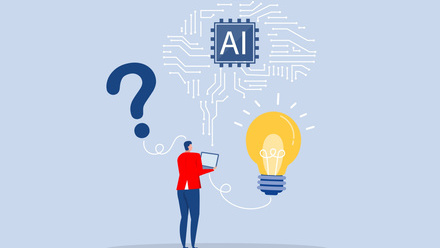In today’s fast-paced world, don’t forget to embrace humanity

At least, you think it’s a baby. But on closer inspection...
The Science Museum’s Robots exhibition opens in exactly that fashion. For most of us, this first sight should be endearing, connecting with whatever degree of parental instinct we possess.
But watch the visitors coming in through the door, and you’ll see most are repulsed rather than entranced. This is a robot baby. Its movements are uncannily like those of a real baby, but clearly it is not real. The facial features are slightly too stilted, the skin tone slightly too artificial.
The further you progress through the exhibition, the more you see a common theme emerging: some robots broadly resemble humans, they might read the news or beat us at chess, but accurately replicating human reactions and emotions is - for the time being at least - an elusive dream.
That doesn’t mean we are immune to automation. A study by Oxford University academics Frey and Osborne evaluated over 700 jobs and concluded that in 20 years’ time up to 47% of job roles in the US could be automated. It’s interesting that the roles Frey and Osborne found were least at risk are those that require uniquely human skills like empathy and social intelligence.
What about financial education and advice?
Where does financial education and advice sit on the automation spectrum? Can it be delivered entirely through digital channels? At the beginning of this three-part series, I explained that the best way to make learning effective is to take advantage of individuals’ want or need for education. In a corporate setting, it may not always be practical to provide face-to-face education to exactly match individuals’ timescales. As we saw in the second article, there are plenty of digital, and other, techniques that can support learning at any time without the need for human involvement.
Online education and advice can be great for helping employees understand more about specific products, such as saving into a company pension, or equipping them with skills like household budgeting. It can enable employees to understand more about their current financial situation, and even support them in finding products that might suit their personal goals - or at least help in eliminating unsuitable options.
However digital education is less effective at identifying and responding to intricate personal circumstances, or at inviting dialogue that can open up new levels of understanding. It doesn’t register the nuances of body language or other visual cues that help an adviser or educator to understand whether someone really understands the information being passed onto them.
Using those capabilities - our social intelligence - sets face-to-face education and advice apart from any other approach. That is particularly important in an area as complex and personal as financial education, where a one-size-fits-all approach can’t work.
As the Science Museum’s exhibition shows, automation can go a long way towards carrying out tasks traditionally done by humans. In our context, it can lay the groundwork for good financial understanding, but echoing the limitations of the museum’s robots, empathy, understanding and personal interaction will always win out.
This article was provided by Close Brothers.
Supplied by REBA Associate Member, TrinityBridge Limited, formerly Close Brothers Asset Management
TrinityBridge has been delivering workplace financial wellbeing programmes to some of the UK’s best-known employers for over 55 years.







